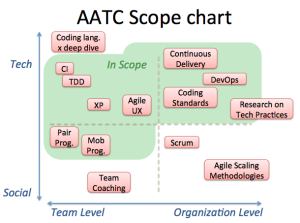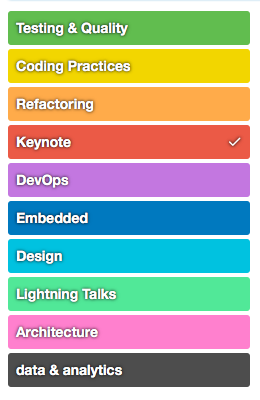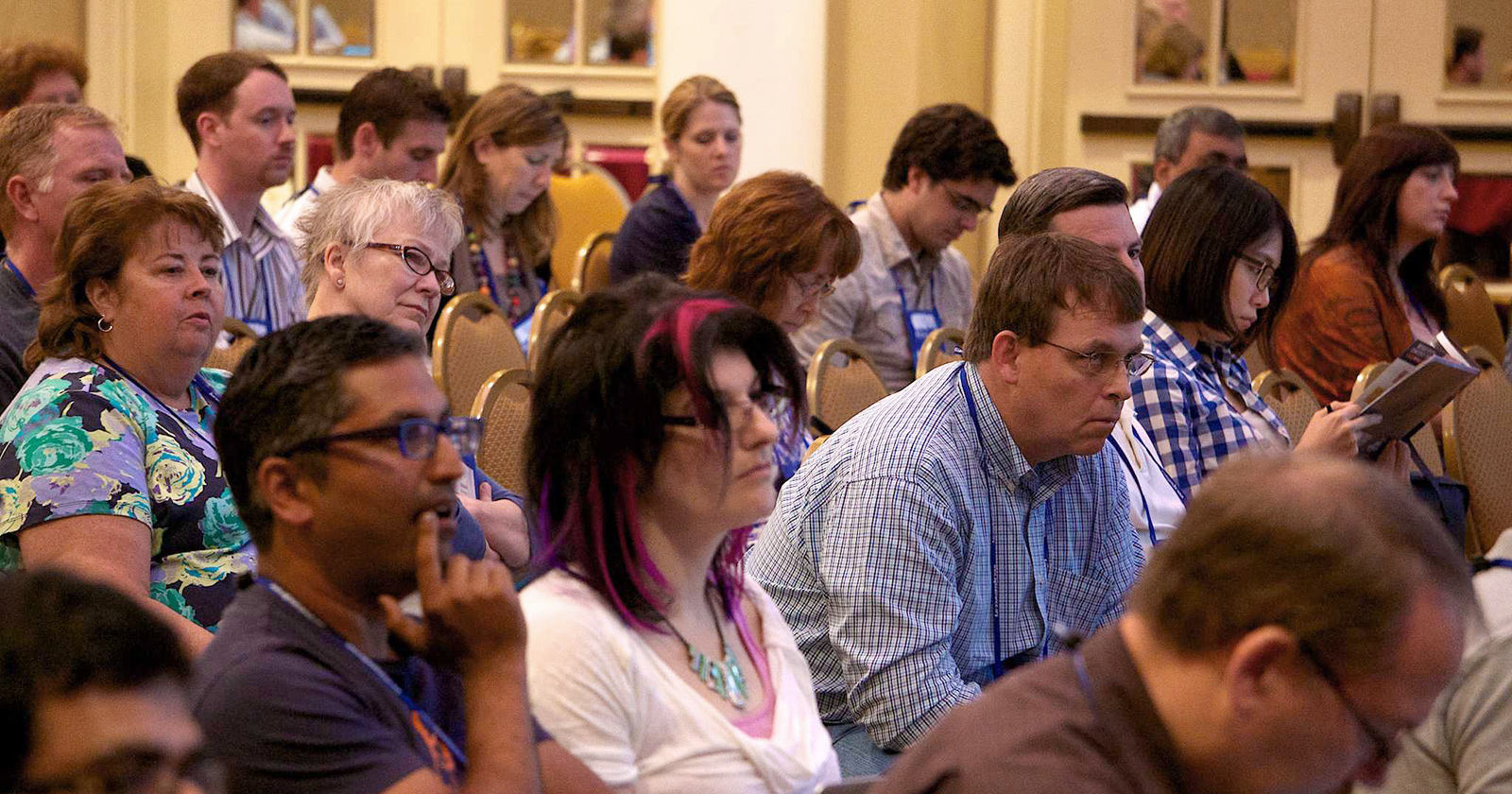 In Nancy Van Schooenderwoert’s post about the motivation behind the Agile Alliance Technical Conference conference (#AATC2016), she includes our graph of what is in scope for the event. Our goal is to put together a program that addresses the topics within that scope. Our next step was to find presenters who could help participants learn about these essential technical practices.
In Nancy Van Schooenderwoert’s post about the motivation behind the Agile Alliance Technical Conference conference (#AATC2016), she includes our graph of what is in scope for the event. Our goal is to put together a program that addresses the topics within that scope. Our next step was to find presenters who could help participants learn about these essential technical practices.
Who can help?
The Agile Alliance invited Nancy, Rachel Laycock, Craig Smith, Jim Newkirk and me to participate on the Program Committee for AATC2016. We represent a diversity of backgrounds and core competencies. We’re also an international team, spread across many time zones: North America, the UK and Australia.
We figured out a day and time for a weekly meeting to check in and make decisions — a challenge given our time zone spread. (Poor Craig got stuck with a meeting at dawn!) We facilitated our brainstorming by drawing and writing in shared Google Docs. We set up a Slack channel and started planning and tracking tasks in the online tool Trello. We agreed on the goals and topic areas that Nancy wrote about.
Our first inclination was to open a Call for Papers for AATC2016. However, we realized time was too short to wait for submissions, review them, and then select sessions. We decided that for this first year, we would invite all the presenters.
An invitation-only program is tricky. We wanted a diverse lineup of speakers that could maximize the learning experience for each participant. We created a shared Google spreadsheet to brainstorm about possible speakers. As each of us thought of someone knowledgeable on one of the AATC topic areas, we put in links to that person’s work along with topic ideas and the track where the session might fit. The spreadsheet helped us track invitations to speak and status. We discussed these in our weekly calls and started issuing invitations.
Drafting the program
Soon we had a stellar lineup of presenters covering a wide range of topics, including agile data engineering, DevOps, architecture, mob programming, BDD for non-coders, and TDD in embedded systems. Some sessions are 90-minute hands-on workshops while others are 45-minute talks. Our next task was to arrange these into tracks. We came up with this list of topic areas. Some sessions overlap more than one:

Designing a program when you’re a completely distributed team is especially challenging! We improvised by using Trello for this purpose, marking the different tracks with the color-coded labels.
Luckily we aren’t in this alone — the Agile Alliance staff does all the logistics, like creating the website, getting speaker agreements and organizing the conference facilities. Jessica Small drove our program-creation process, moving the session cards around in Trello as we made suggestions. I was amazed how quickly the program took shape. Each time slot has a good variety of session topics for participants to choose.
Extras
The program included two terrific keynotes as well as workshops and talks. In addition, we scheduled lightning talk sessions which will be crowdsourced. We’re reserving some lightning talk slots to be selected by popular demand during the conference.
Open Jam, where participants can self-organize activities, will be going on throughout most of the conference. We’ll also have a “fun over study” track where coding dojos, katas, impromptu workshops, and other activities will take place.
The Big Finish
To wrap up the conference, we decided to have a panel discussion on the future of software development in an agile world. The panelists include Martin Fowler, Michael Feathers, Rebecca Parsons, Laurie Williams, and Amitai Schlair, with one or two more perhaps joining. What will we be saying as we look back 15 years from now? Panelists will have different points of view, such as education, the Agile Alliance, leading-edge development, and more.
There’s plenty of work left to do, but the Agile Alliance Technical Conference 2016 has an outstanding program with leading practitioners in many different software delivery competencies. We hope you’ll join us!



![[Case Study] Lessons from descaling 25 Scrum teams](https://www.agilealliance.org/wp-content/uploads/2024/12/descaling-teams-1200x630-1-150x150.jpg)



![[Case Study] Lessons from descaling 25 Scrum teams](https://www.agilealliance.org/wp-content/uploads/2024/12/descaling-teams-1200x630-1-300x158.jpg)

